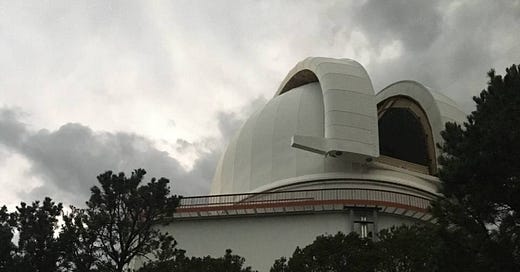After spending two nights at the observatory, I found myself crawling back under the blanket. But then I got up, got dressed, and checked if the clouds had cleared to reveal the Milky Way. No luck. I’m still considering waking up at 3 a.m. to try again.
Turns out, those “white clouds” we often see stretching across the sky aren’t clouds at all—they’re the arms of our galaxy, dense with stars. Our eyes just can’t resolve them, so we perceive them as haze. I didn’t know that before. I’m still processing it.
I’m also still absorbing the experience of last night: three hours observing celestial objects through a telescope. It wasn’t a massive one—just 36 inches in diameter—but it was optical, meaning we looked directly through lenses at light that had traveled millions of light-years to reach us. The really big telescopes—used by actual astronomers—don’t even show images anymore. They show data, graphs, spectra. So this—seeing it all with my own eyes—felt extraordinary. I wasn’t sure if I was looking into space or into time. But as they say, you can’t see past the cosmological horizon.
We observed a galaxy about 400 million light-years away. The universe itself is 13.7 billion years old. We also saw nebulae, star nurseries only 6,000 light-years from us. Practically next door. Nothing changes much for a star in 6,000 years—it’s like blinking an eye. There were stunning star clusters, double stars, a dying red giant (how our own sun will eventually bow out), and Saturn. Saturn looked so sharp and surreal, with its rings cleanly defined, it could’ve been CGI in black and white.
Even though the journey left me exhausted—enough to dull the intensity of it all—I was struck by this: telescopes don’t actually bring stars closer. They let you see stars that would otherwise remain invisible. Through the lens, they still appear tiny, just a bit sharper. With the right conditions, you can even see hydrogen gas….




